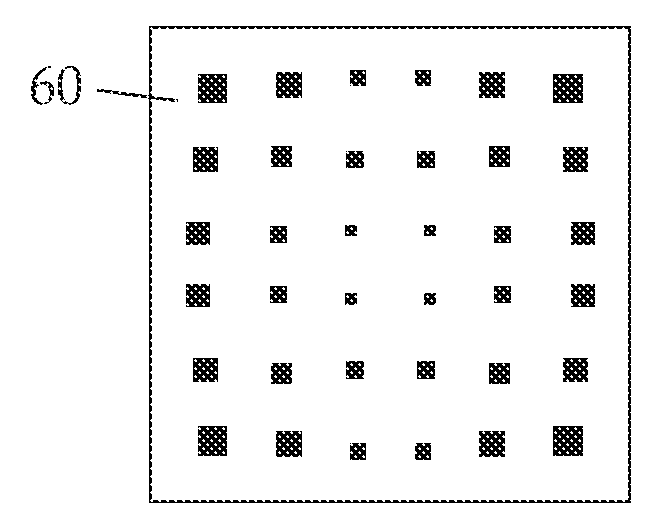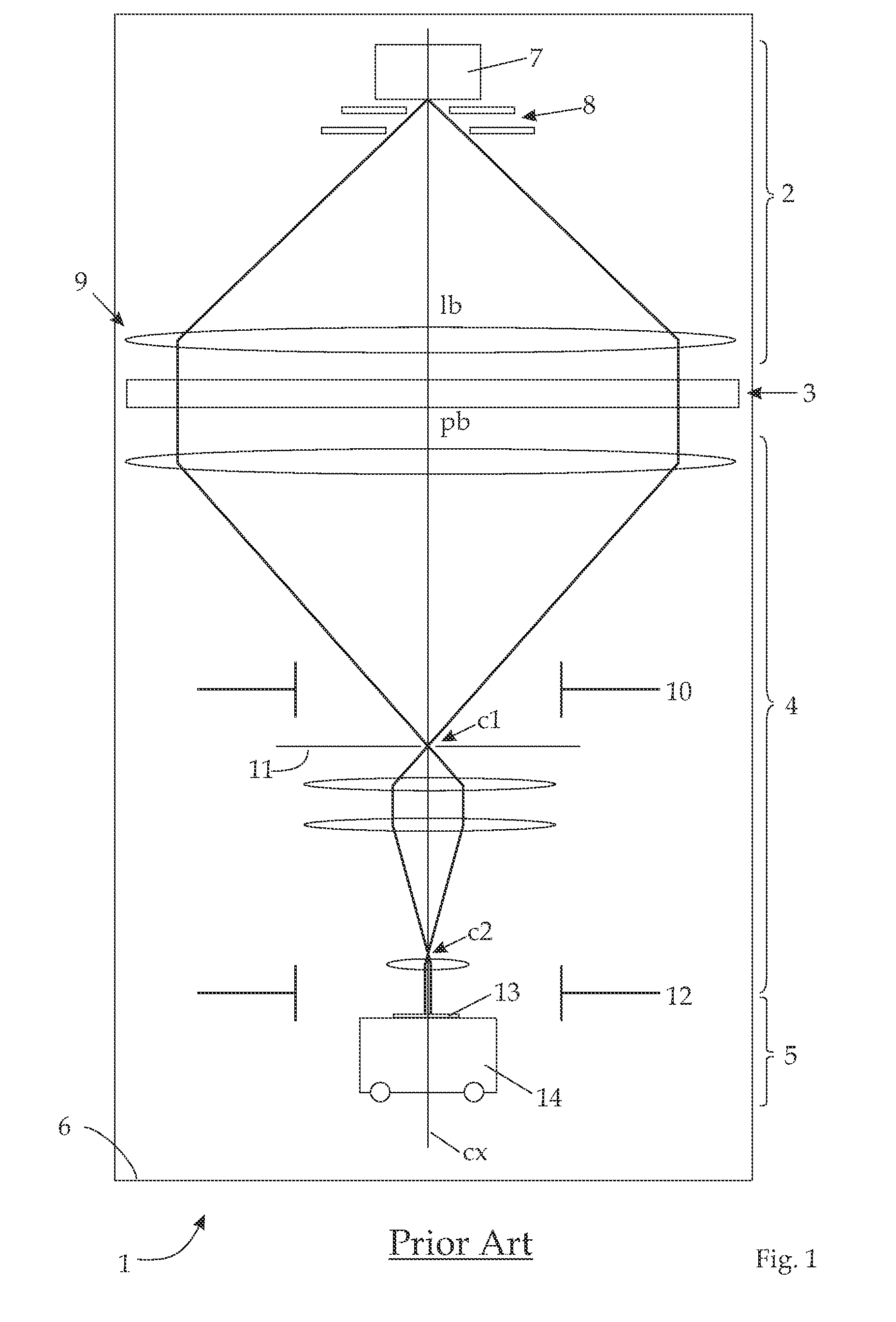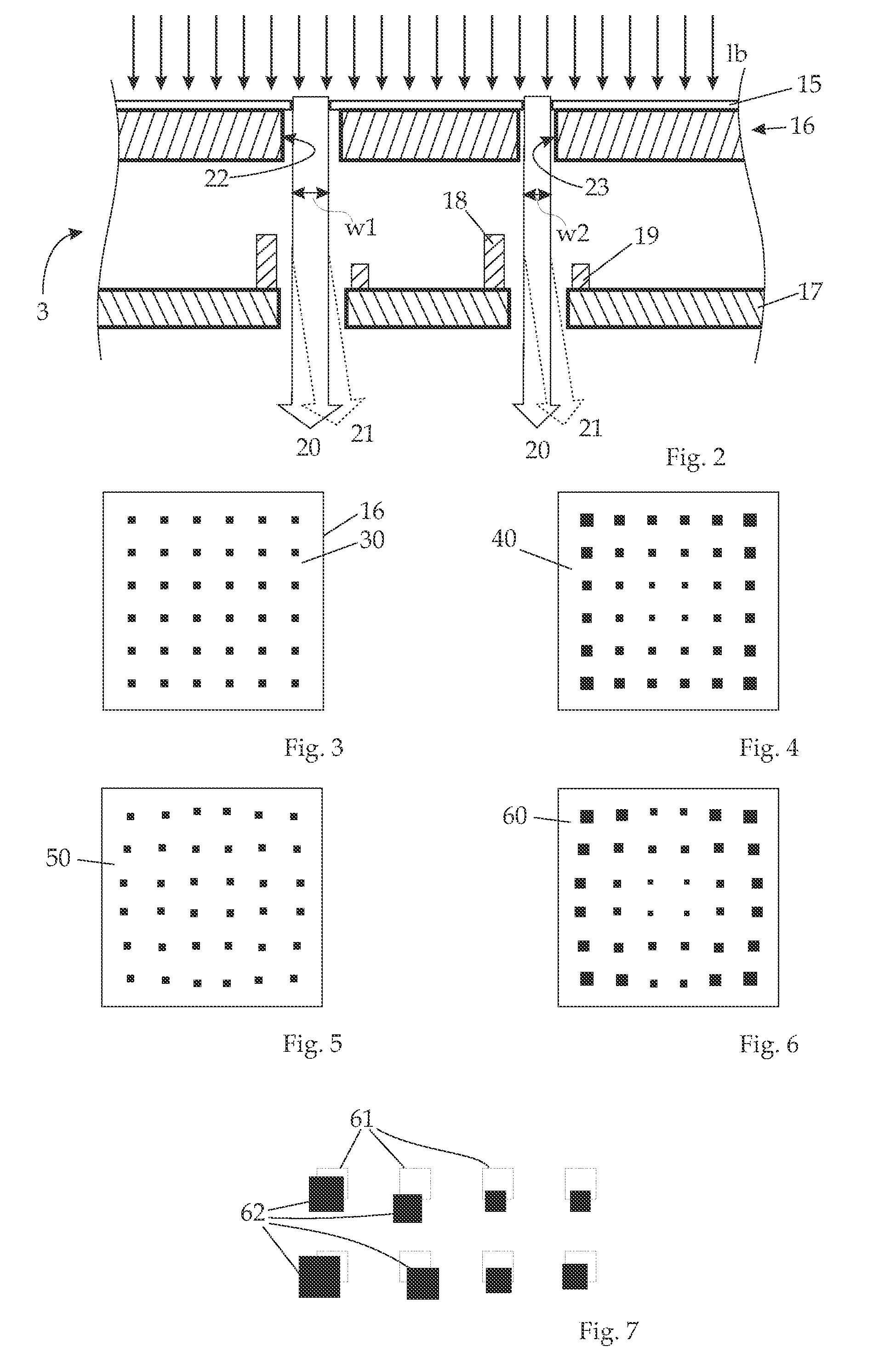Compensation of dose inhomogeneity and image distortion
a dose inhomogeneity and image distortion technology, applied in the field of maskless particlebeam exposure apparatus, can solve the problem of unavoidable influence of the dose rate per beam
- Summary
- Abstract
- Description
- Claims
- Application Information
AI Technical Summary
Benefits of technology
Problems solved by technology
Method used
Image
Examples
Embodiment Construction
[0049]It should be appreciated that the invention is not restricted to the embodiments discussed in the following, which merely represent possible implementations of the invention.
[0050]An overview of a lithographic apparatus employing the preferred embodiment of the invention is shown in FIG. 1. Such a lithographic apparatus is well known in prior art. In the following, only those details are given as needed to disclose the invention; for the sake of clarity, the components are not shown to size in FIG. 1. The main components of the lithography apparatus 1 are—corresponding to the direction of the lithography beam lb, pb which in this example runs vertically downward in FIG. 1—an illumination system 2, a pattern definition (PD) system 3, a projecting system 4, and a target station 5 with the substrate 13. The whole apparatus 1 is contained in a vacuum housing 6 held at high vacuum to ensure an unimpeded propagation of the beam lb, pb along the optical axis cx of the apparatus. The ...
PUM
 Login to View More
Login to View More Abstract
Description
Claims
Application Information
 Login to View More
Login to View More - R&D
- Intellectual Property
- Life Sciences
- Materials
- Tech Scout
- Unparalleled Data Quality
- Higher Quality Content
- 60% Fewer Hallucinations
Browse by: Latest US Patents, China's latest patents, Technical Efficacy Thesaurus, Application Domain, Technology Topic, Popular Technical Reports.
© 2025 PatSnap. All rights reserved.Legal|Privacy policy|Modern Slavery Act Transparency Statement|Sitemap|About US| Contact US: help@patsnap.com



